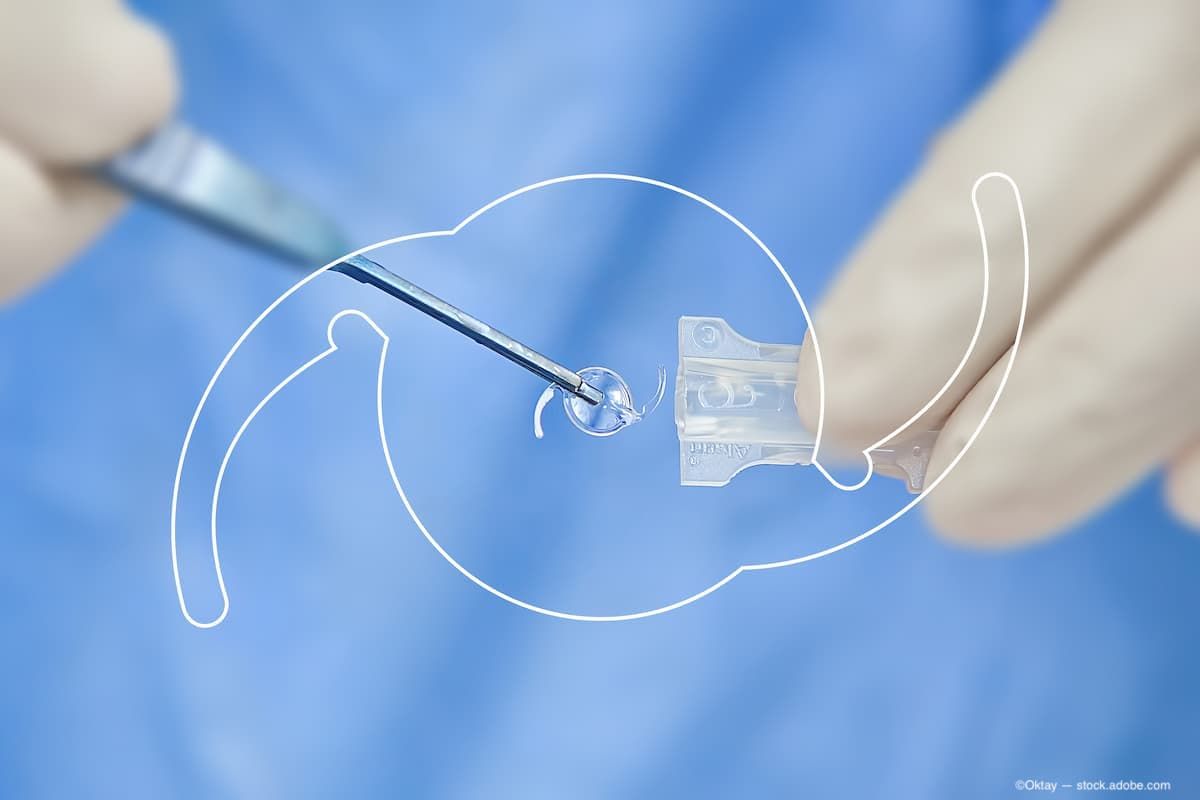Article
Excellent visual outcomes achieved with novel trifocal design
Author(s):
A diffractive trifocal IOL achieved satisfactory vision with a high rate of spectacle independence

A diffractive trifocal intraocular lens (AcrySof PanOptix, Alcon) achieved excellent vision at all distances with a high rate of spectacle independence and importantly little photic phenomena.
Reviewed by Yonca A. Akova, MD, FEBO
Patients who received the AcrySof PanOptix intraocular lens (IOL) (Alcon) with its new diffractive trifocal design achieved satisfactory vision at all distances with a high rate of spectacle independence and very little photic phenomena, Yonca Akova, MD, reported.
This IOL is a one-piece, aspheric, non-apodized diffractive hydrophobic lens with a 4.5-mm central trifocal zone and 15 diffractive zones. The IOL has adds of +3.25 diopters (D) for near vision and +2.17 D for intermediate focus.
She and her coinvestigators conducted a prospective, non-comparative, non-randomized study to evaluate the refractive and visual outcomes and the satisfaction levels of 69 patients (40 men, 29 women; mean age, 64.5 years) after bilateral implantation of this IOL during cataract surgery or refractive lens extraction. All surgeries took place from October 2017 to June 2018. The patients underwent ophthalmologic examinations preoperatively and 6 months postoperatively.
The primary outcome measures were the manifest refraction; uncorrected distance visual acuity (UDVA), intermediate VA (UNVA) at 60 centimeters, and near VA (UNVA) at 40 centimeters; defocus curves, dysphotopsia, spectacle independence, posterior capsular opacification (PCO), and the results of the visual function test-14 (VF-14), Dr. Akova recounted. She is professor of Ophthalmology, Department of Ophthalmology, Bayındır Hospital, Ankara, Turkey.Six-month results
The outcomes were very promising. The investigators reported that at 6 months postoperatively mean UCVA was 0.02 logarithm of the minimum angle of resolution (logMAR); all patients had 0.3 logMAR or higher visual acuity and 97.1% had 0.1 logMAR or higher. The mean UIVA was 0.06 logMAR; all patients had 0.2 logMAR or higher and 75.4% had 0.1 logMAR or higher. The mean UNVA was 0.05 logMAR; all patients had 0.2 logMAR or higher and 82.6% had 0.1 logMAR or higher.
Regarding the defocus curves, the average VA was 0.1 logMAR or better between +0.05 to -3.00 D. Two peaks were seen at 0.00 D and -1.50 D. These results were similar to those reported previously.
The optical phenomena reported by patients were mild nondisturbing halos in 43.4%, mild glare in 14.4%, disturbing halos in 1.4% upon questioning , and mild PCO in 5%, with Nd:YAG capsulotomy necessary in one eye. The mean VF-14 test score was 97.7. The vast majority of patients, 84.2% reported complete spectacle independence.
Comparison with previous studies
Dr. Akova reported that compared with published studies of the PanOptix IOL, non-disturbing halos were reported by 57.6% in the study under discussion compared with 15% to 95% in the other studies. The rate of spectacle independence in this study was 94.2% compared with rates ranging from 94.8% to 95% in other studies. All current patients scored 93 points or higher on the VF-14 test, which was a similar result to those reported in the literature. In addition, the current UDVA, UIVA, and UNVA were similar to previous studies and slightly better than those reported by Alio et al. in 2018 and slightly below those reported by Kohnen et al. in 2017.1,2
“The combination of good visual outcomes and spectacle independence with a low incidence of disabling photic phenomena are the main reasons for the high levels of patient satisfaction and the VF-14 test scores,” Dr. Akova said.
The current study provided the clinical outcomes achieved with the PanOptix IOL with the largest sample size, she pointed out. The important information that was added to the knowledge about this IOL was that its bilateral implantation provided excellent visual outcomes at all distances with a high rate of spectacle independence.
Disclosures:
Yonca A. Akova, MD, FEBO
E: yoncaaakova@yahoo.com
The authors had no financial interest in any aspect of this report.
References:
1. Alió JL, Plaza-Puche AB, Alió Del Barrio JL, et al. Clinical outcomes with a diffractive trifocal intraocular lens. Eur J Ophthalmol. 2018;28:419-424.
2. Kohnen T, Herzog M, Hemkeppler E, et al. Visual performance of a quadrifocal (trifocal) intraocular lens following removal of the crystalline lens. Am J Ophthalmol. 2017;184:52-62.
Newsletter
Don’t miss out—get Ophthalmology Times updates on the latest clinical advancements and expert interviews, straight to your inbox.





